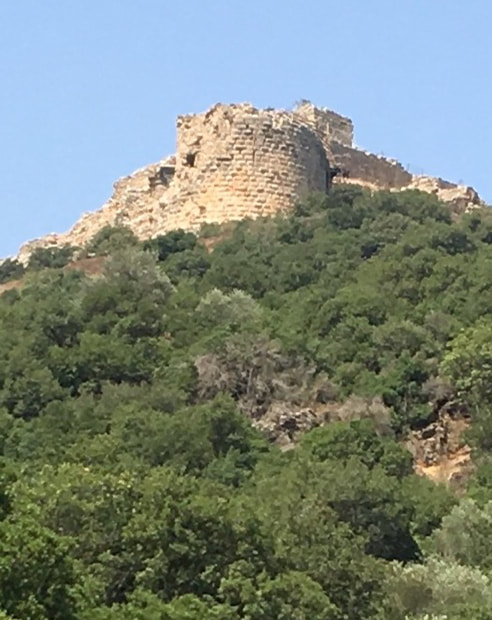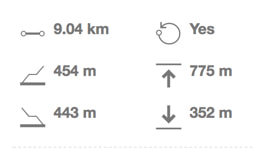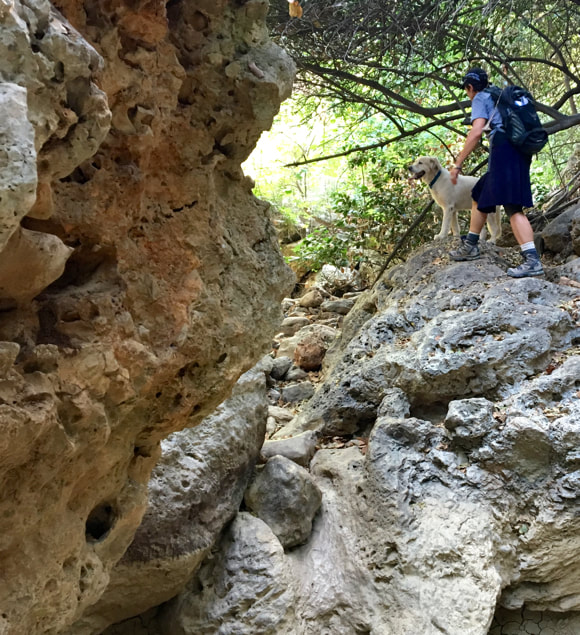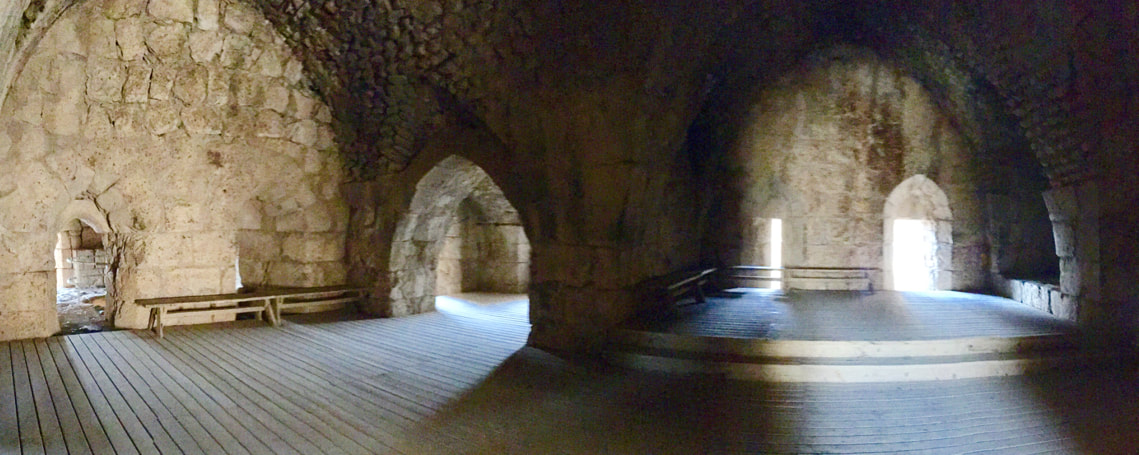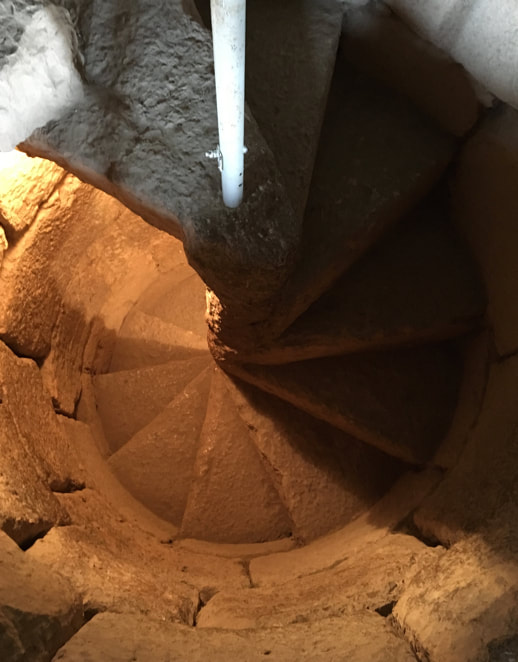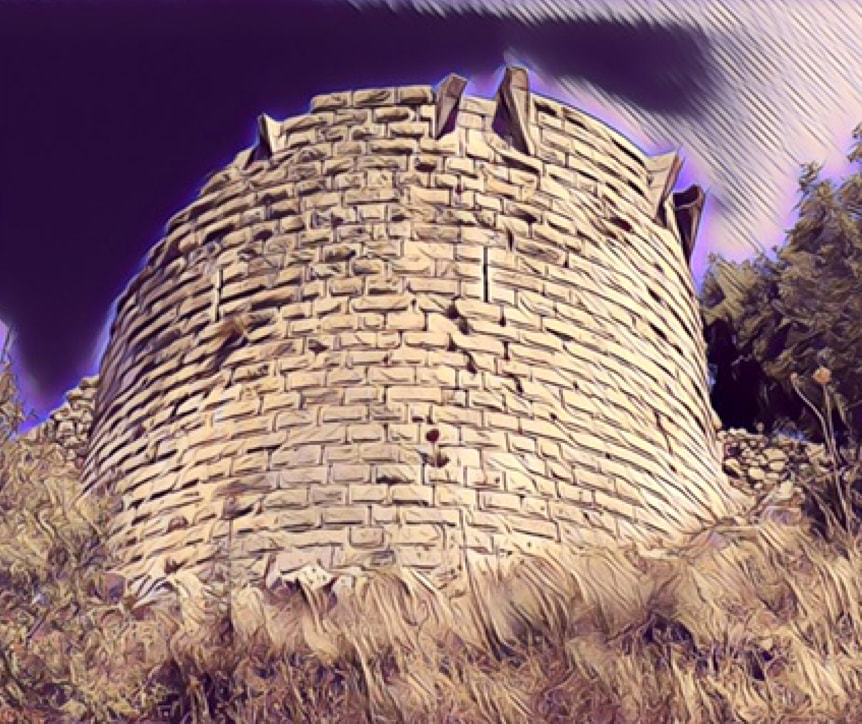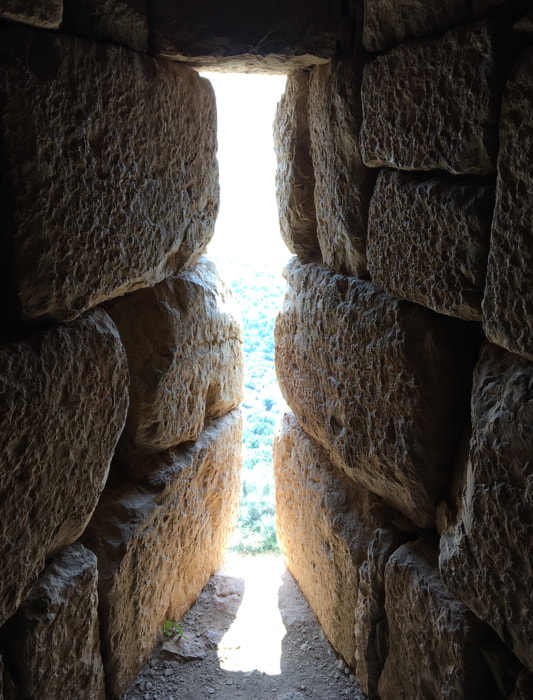|
“This must be the most glorious ruins mound of its kind in the world.” Mark Twain writing on Nimrod’s Fortress
Ever had the urge to visit a ‘ruins mound’? We did! From Tsfat, the entire north and the Golan is your playground, so off we went early in the morning to Israel’s northernmost area. It was a scenic one-hour drive from Tzfat along the Hula Valley and up towards the Hermon. As we are hikers, we chose a circular route which entailed walking up to the castle and back down again on a different path. We parked the car near the Banias Nature Reserve on Route 99. There is a small paved road just west of the entrance. Park the car where you see a black blaze and follow the road until you enter a treed area. You will soon be climbing up the dry riverbed of Nahal Govta. The climb is strenuous and at times you have to scramble over large boulders. But it is shaded and serene. Mossy oaks and flowering oleanders set roots right into the rocks. We followed the black blaze up, hiking up for two hours and came to a forked blue blaze. We followed the blue blaze to the right towards a sign to Nimrod’s Castle. Peeking out above us was an impressive stone fortress, the largest of its kind in Israel. We then followed the green blaze at the edge of the parking lot. And downhill we went. It was a much gentler descent than the black trail except there was very little shade. It took us just over an hour to make it to the bottom. We arrived just outside the Banias Nature Reserve where refreshing pools of water shimmered. You can easily combine these two sites in one day.
We followed the road for five minutes and were back at our car. |
Hike Details:
Getting there: Put into WAZE or Google Maps 'Khirbat Panyas Banyas' You can park your car there and walk along the dirt road north east, following the black trail markers as you begin the trail. Detailed Trail Map Here We walked to the road and turned right, arriving at the entrance of the Nimrod Fortress National Park. Remember to bring money (we forgot - but that is another story) as you have to pay to enter the park.
The fortress is huge, measuring 420 metres long and 150 meters wide. It was built by the Mamluk governor of Banias to protect against the invading Crusaders. It was completed in 1230. Later it became a prison and was abandoned. The fortress is in good condition. A pathway leads to the fort’s towers, hidden stairwells, massive domed hallways and huge water cistern. The views from the top sweep across the Hula Valley, Lebanon and the Golan. |


